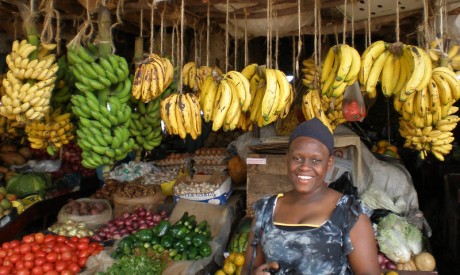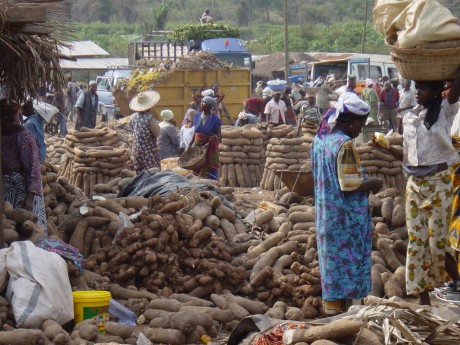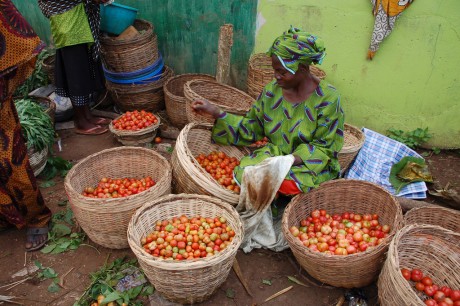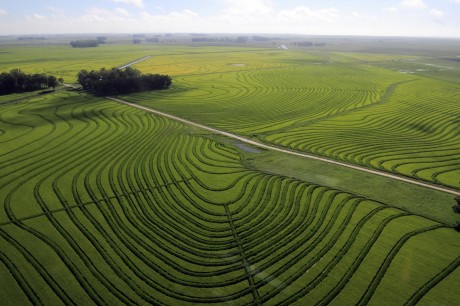Sustainable agricultural intensification to feed the cities and grow Africa

David Simon, Professor of Development Geography, Royal Holloway, University of London and CoSAI Commissioner reports on the critical importance of sustainable agricultural intensification1 to feed the cities and grow Africa – a crucial topic that was addressed in a roundtable hosted by CoSAI that took place at the African Green Revolution Forum (AGRF 2020) earlier this week.
Future food scenarios to feed urban Africa
In Africa, as elsewhere, people are increasingly living in urban areas –up to 1 billion people could live in African towns and cities by 2040. Just 20 years ago, Africa’s population was around 75% rural. This means that considering future food security scenarios must take a food systems approach that integrates, rather than separates, rural and urban populations. Consider that of the 9% of the world's population currently classed as undernourished, almost 20% are in Africa. These numbers do not yet include the global estimates of 100 million people expected to be driven into extreme poverty by COVID-19 in the coming months.


Exposure to risk
In 2020, the COVID-19 pandemic has brought home just how vulnerable our food system is to risk in a way that all the narrative about climate change and biodiversity loss has so far failed to do.
Many high-value and non-traditional commercial crops that have flourished under agricultural diversification and export-oriented policies since the 1980s suddenly look vulnerable and could be increasingly unsustainable, especially as international airfreight is disrupted and overseas markets are curtailed. Redirection of some export flows to urban areas within the same or neighboring countries, perhaps accompanied by sustainable intensification to rationalize the use of water, land, and other inputs, would represent an important adaptation, particularly given the growing demand from expanding urban middle classes. In many African countries, as elsewhere, movements between urban and rural communities which prove critical at times of food or employment shortages, are often now restricted just when they are most needed.
Integrate not separate
To feed the growing urban population, food security strategies must step away from conventional dichotomous thinking that considers agriculture and food production as solely rural activities, and urban areas as food consumption locations.
For example, in parts of West and East Africa, urban and peri-urban food production at different scales accounts for a substantial proportion of consumption and represents an important livelihood activity. In metropolitan Dar es Salaam and Kampala, for instance, between half and two-thirds of the food consumed is produced locally. Some 54% of Africa’s current urban population lives in towns and cities of under 500,000 inhabitants, where there is often considerable potential for enhancing urban and peri-urban agriculture. Producing fruit and vegetables in and around cities has the added benefit of shortening value chains, thus reducing losses during transport and storage.
Populations are also mobile, with many households having a diverse mix of urban and rural livelihood opportunities, which also offers security in times of risk. Rurally based household members often take food to urban relatives to save cash expenditure or when particular foods are in short supply. However, in times of drought or famine, such flows can be reversed. This is a systems approach in action!
There is potential to do much more, but this requires bringing together urban and rural ministries to work on integrated food security strategies. It also requires that urban food security strategies be underpinned with regulatory reform and institutional support to overcome obstacles like rising city land prices or bureaucracy such as outdated urban land-use zoning systems that forbid food cultivation.

The Commission’s Challenge
As part of the new global Commission on Sustainable Agricultural Intensification (CoSAI), I along with my co-commissioners will be tasked with investigating different key questions related to innovation in Sustainable Agricultural Intensification (SAI) in the global South including what future agricultural systems will need to look like and the innovations that will be needed to get there – from technologies to institutional, financial, and regulatory change. We will also examine how these might be affected by different scenarios, such as climate change and COVID-19, seeking out experts along the way to help inform us.
At the round table ‘Sustainable Agricultural Intensification to Feed the Cities and Grow Africa’, which took place at AGRF earlier this week, some of the Commissioners explored these issues further in relation to key questions such as:
- what the implications of rapid urbanization are for innovation in Africa’s agricultural systems?
- how such innovation can best be supported and developed to achieve the environmental objectives of SAI?
- what changes in these may be needed in the perceived priorities of major investors in innovative SAI?
- what are the major policy constraints to generating and adopting SAI across Africa and how they can be overcome?
The discussion and ideas generated during the session will, in turn, feed back into CoSAI’s evolving agenda. We thank everyone who participated.
David Simon
Twitter @UrbanDavidSimon

_1/index.jpg?itok=XyLcaYcc)
1 CoSAI has a broad vision of SAI - from field to farm to landscape to food system. (CoSAI's focus is on agricultural systems rather than the whole of food systems.) SAI should promote, or at minimum not cause harm to, the following objectives, consistent with the UN Sustainable Development Goals:
- Increased availability and broad access to affordable, safe and nutritious food; [SDG2]
- Improved productivity and efficiency of resource use, with reduced pollution, loss and waste [SDG12]
- Improved natural environment, including climate action and promotion of One Health; [SDG15, SDG13, SDG3]
- Reduced poverty and increased resilience of livelihoods [SDG1, SDG8]
- Improved social equity, including reduced gender inequality and social exclusion [SDG10]
*Commissioners' perspectives are their own and are not considered as collective or endorsed CoSAI position statements.
Image credits: 1. Fruit and vegetable market in Kenya. Bioversity International; 2. Techiman market – a key commercial node in food supply systems between Ghana’s north-central rural areas and the major urban markets in Accra–Tema, Kumasi and Sekondi–Takoradi, as well as regional centres like Sunyani. Photo: David Simon; 3. Woman cleaning and sorting tomato fruits prior to selling at Ijaye market, Oyo State, Nigeria; 4. Rice production in Eastern Uruguay from the air. Credit: ©2012CIAT/NeilPalmer
